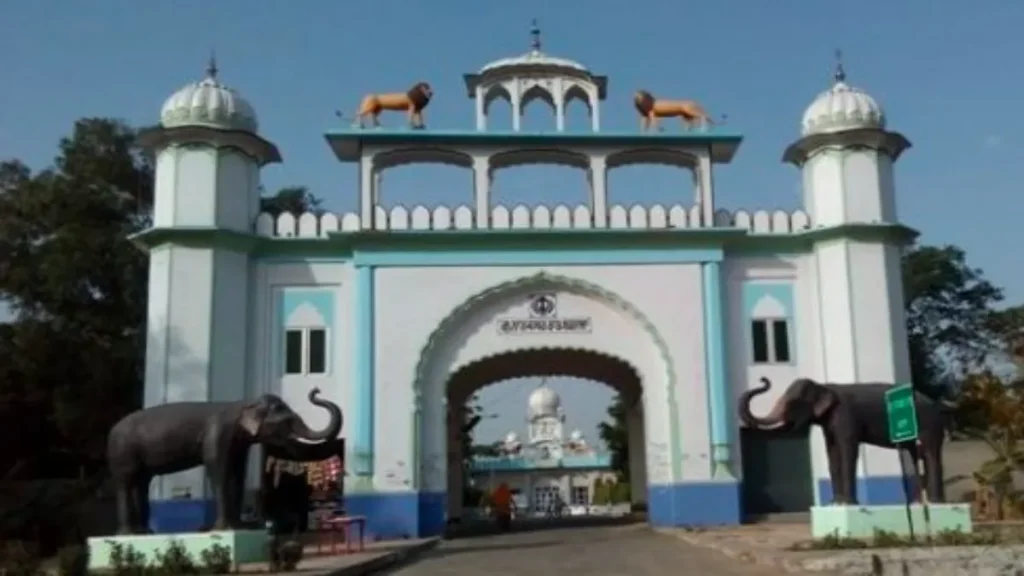Barnala District: PUNJAB
Discover the rich heritage and modern development of Barnala District in Punjab, India. Explore its agricultural roots, growing industries, cultural festivals, and educational progress, all while preserving its historical significance.

Nestled in the heart of the vibrant Indian state of Punjab, Barnala District stands as a testimony to the harmonious blend of modern development and historical significance. Spread over an area of approximately 1,479 square kilometers, this district is home to a population that thrives on agriculture, industry, and a strong sense of community.
With a history dating back centuries, Barnala boasts a heritage that reflects the region’s cultural diversity. The district’s name is believed to have been derived from Baba Ala Singh, the founder of the princely state of Patiala. It was under the patronage of the Maharaja that the region witnessed significant growth. Today, remnants of its historical past can be seen in the form of ancient temples, forts, and traditional festivals that continue to be celebrated with zeal.
Agriculture forms the backbone of Barnala’s economy, with fertile soil and a favorable climate supporting the cultivation of a variety of crops. Wheat, rice, cotton, and sugarcane are among the main crops grown here. The hardworking farmers, deeply rooted in tradition, utilize modern farming techniques to maximize yield. This symbiotic relationship between tradition and innovation is what defines the spirit of Barnala.
In recent years, the district has also seen a rise in industrial growth. Small and medium-scale industries have emerged, contributing to the economic development of the region. The textile industry, in particular, has flourished, creating employment opportunities for the local population. This industrial expansion has not only bolstered the economy but has also brought about infrastructural advancements, including improved road networks and connectivity.
Despite modernization, Barnala District holds on to its cultural identity. Festivals like Baisakhi, Diwali, and Lohri are celebrated with fervor, showcasing the vibrancy of its people. The district is known for its traditional crafts, including Phulkari embroidery, which is deeply embedded in the cultural fabric of Punjab.
The educational landscape of Barnala is evolving, with a growing emphasis on quality education. Schools and colleges are striving to provide a well-rounded learning experience for students. This focus on education is empowering the youth to pursue diverse careers and contribute to the district’s overall progress.
Barnala’s administration is committed to sustainable development and improving the standard of living for its residents. Efforts are underway to address environmental concerns, promote healthcare accessibility, and provide basic amenities to all sections of society.
In conclusion, Barnala District encapsulates the essence of a region that embraces its historical roots while marching forward into a promising future. Its blend of tradition and modernity, agriculture and industry, and community spirit is a shining example of how a district can evolve while staying true to its heritage. As it continues to grow, Barnala stands as a testament to the enduring spirit of Punjab’s heartland.
Famous Places in Barnala District
Barnala District is home to several famous places that showcase its cultural heritage and offer unique experiences. Some of the notable attractions include:
Thikriwala Mandir: A prominent temple dedicated to Goddess Durga, Thikriwala Mandir is a revered religious site known for its intricate architecture and spiritual significance. It attracts devotees and tourists alike.
Nanaksar Sahib: This religious institution holds immense importance for Sikhs. Nanaksar Sahib is a gurudwara where followers gather to seek spiritual guidance and participate in community service.
Mehtiana Sahib Gurudwara: Another significant gurudwara in the district, Mehtiana Sahib is known for its historical background and the teachings of Guru Nanak. The tranquil surroundings make it a peaceful place for reflection.
Sanghera: A village in Barnala, Sanghera is famous for its annual fair held in honor of a local saint, Sant Prem Singh Ji. The fair draws a large crowd and offers a glimpse into the traditional culture of the region.
Barnala Fort: This historical fort dates back to the time of Maharaja Ala Singh, the founder of Patiala State. While the fort itself is not open to the public, its presence stands as a reminder of the district’s historical significance.
Nathana Sahib Gurudwara: An important religious site for Sikhs, Nathana Sahib Gurudwara commemorates Guru Nanak’s visit to the area. The serene ambiance and spiritual atmosphere make it a place of devotion and contemplation.
Phul Palace: This royal palace, named after Phul Kaur, the wife of Maharaja Ala Singh, is an architectural gem that offers insights into the regal history of the region. While it is not open to the public, its exterior is a sight to behold.
Bhadaur House: This mansion serves as a symbol of Barnala’s architectural heritage. It was constructed during British colonial rule and showcases a blend of colonial and Indian architectural styles.
Pir-i-Dastgir Dargah: Located in the heart of Barnala town, this dargah holds religious significance for both Muslims and Hindus. It is a symbol of communal harmony and attracts devotees seeking blessings.
Educational Institutions: Barnala is home to various educational institutions that contribute to its reputation as an emerging educational hub. Schools and colleges like the Government Rajindra College and Guru Teg Bahadur Public School have made their mark.
These famous places collectively represent the diverse cultural, historical, and religious aspects of Barnala District. Whether you’re seeking spiritual experiences, architectural marvels, or insights into the region’s past, these attractions offer a well-rounded glimpse into the district’s identity.
Read More :-
